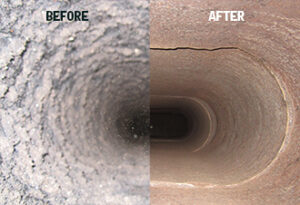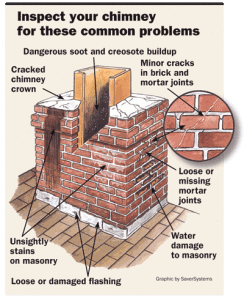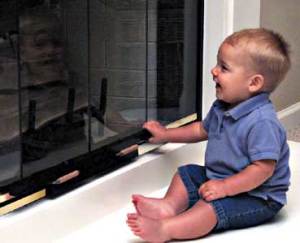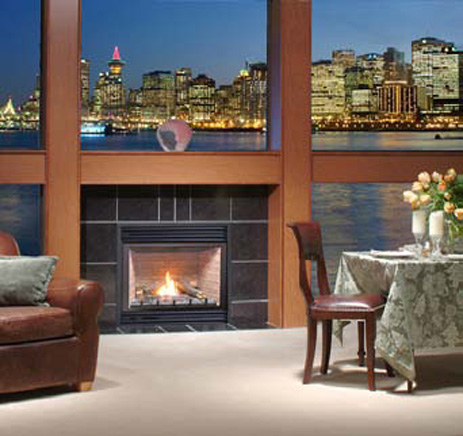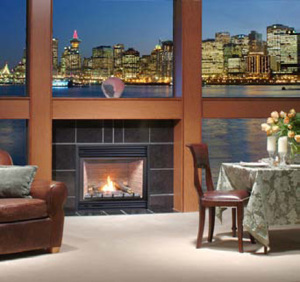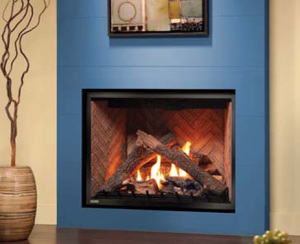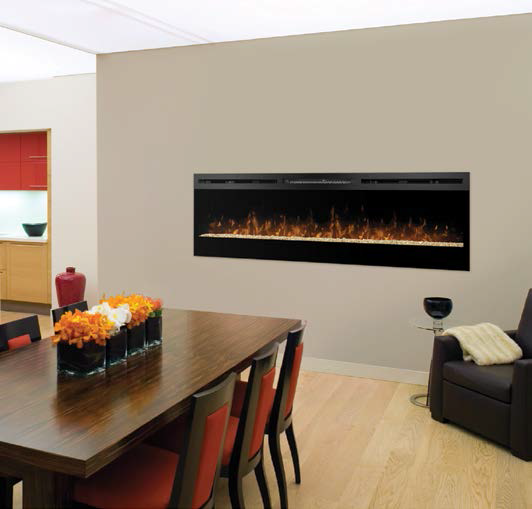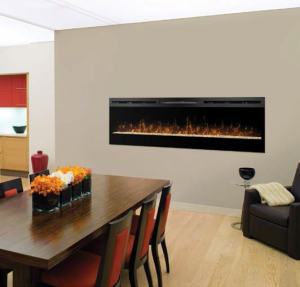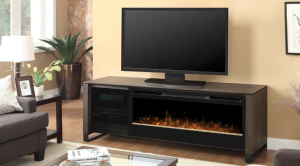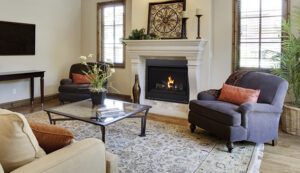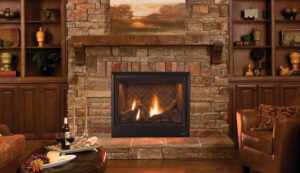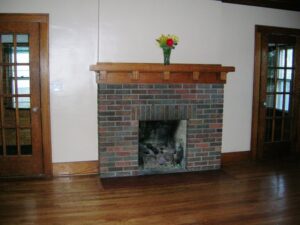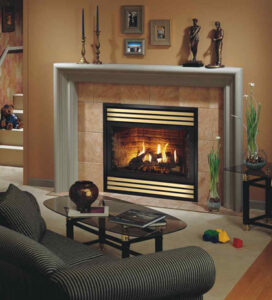Buying and installing a new fireplace can be costly. At Alsip’s we want you to enjoy the fireplace experience rather than dwell on the price tag. To help with the costs of a new fireplace install or upgrade, Manitoba Hydro has introduced the Energy Finance Plan. The Energy Finance plan is a convenient, on-bill financing for upgrades to gas and electrical systems and is available to Manitoba Hydro residential, commercial, farm, and seasonal customers.
Highlights of the plan include:
Financing Information
- Borrow up to $5,000.00 per residence.
- The minimum allowable loan amount is $500.
- The maximum financing term is 5 years.
- The minimum monthly payment is $15.
- Current interest rate is 6.75 per cent.
- No down payment required.
- All work must be performed by a qualified electrician or a licensed contractor who is a participant in the Energy Finance Plan. (Ask us to help you with finding the best in qualified electricians or licensed contractors!)
- Credit approval must be pre-arranged.
- Repayment of the loan is the responsibility of the homeowner and not the tenant.
- The loan becomes due and payable when the house is sold; the loan is not transferable.
- Financing is not eligible for homes under construction, unoccupied homes, or projects in progress or already completed.
If any clarifications are needed for the above information do not hesitate to call us at 204-667-3330 or fill in the contact form below!
Not sure if your project is able to qualify? Here is a list of eligible projects:
- upgrades to electrical service entrance and panel board equipment;
- wiring circuits and associated equipment;
- natural gas piping, venting, ductwork, delivery, permit cost, and taxes;
- central air conditioning systems (must have a minimum SEER of 13.0);
- electric/conventional natural gas water heaters (electric must meet CSA C-191 standard);
- electric and natural gas furnaces/boilers for seasonal, farm, and commercial customers;
- combination heating systems;
- unit heaters (natural convection, forced air, or forced air infrared);
- direct vent natural gas fireplaces (built-in and free-standing);
- security lighting and fixtures (wiring changes must be made as part of other electrical and energy improvement work);
- gas pool heaters;
- permanently installed dehumidifiers (hard-wired);
- permanently installed air purifiers (hard-wired);
- air source heat pumps.
We’ve highlighted the main project that Alsip’s can help you with! We have experienced installers that are certified and guaranteed to provide a satisfying finished result. To receive more information and a copy of the Energy Finance Plan, please fill out the contact form below:
A wood stove can be a primary heating source for your home or room, adding a layer of ambiance through the crackling of burning wood. Cozying up to a wood burning stove reminds us to stay connected to our families and remember the simple things in life. What is the most important aspect to keep in mind with a wood burning stove when it comes to our loved ones? Safety.
What comes to mind when a wood burning stove is mentioned is a roaring fire; all you need to do is throw in a few logs into it right? Not quite.
Modern wood burning stoves are designed with safety in mind. Modern stoves produce almost no smoke, minimal ash, and require less firewood. While older uncertified stoves release 15 to 30 grams of smoke per hour; new EPA-certified stoves produce only 2 to 7 grams of smoke per hour (EPA).
Emission Limits for Wood Stoves
Wood Stoves are now a much more complicated piece of technology. Gone are the years of just putting a block of wood into a metal container. With EPA’s Emission Limits, wood stoves need to be designed under certain guidelines. EPA’s mandatory smoke emission limit for wood stoves is 7.5 grams of smoke per hour (g/h) for non-catalytic stoves and 4.1 g/h for catalytic stoves. Stove manufacturers have improved their combustion technologies over the years, and now some newer stoves have certified emissions in the 1 to 4 g/h range.
Two Types of Wood Stoves
Now that we’ve discussed the recent advancements in reducing smoke emissions we can now talk about the two different combustion styles that help achieve these reduced emissions, catalytic and non-catalytic combustion. Both approaches have proved effective, but there are a few performance differences.
Although most of the stoves on the market are non-catalytic, some of the more popular high-end stoves use catalytic combustion. Since they are slightly more complicated to operate, catalytic stoves are suited to people who like technology and are prepared to maintain the stove properly so it continues to operate at peak performance.
Non-catalytic Stoves
Homeowners will save money and time with a non-catalytic model over a catalytic model. It is also easier to start and operate, and is ideal for those with less heating demands on their wood stoves. A few key advantages for a non-catalytic stove are:
- Slightly lower cost
- Lively flame picture
- No catalytic combustor to replace
- Easier to operate
How Does it Work?
- Primary combustion air enters the stove and is preheated then introduced above the glass doors. This primary air flow is adjustable and provides control of fuel burn rate and heat output. The sweeping action of the airwash system helps keep the glass clean for better view of the fire.
- Jets of combustion air enter through the shoe refractory and maintain a superheated primary combustion zone of coals and burning fuel where combustible gases ignite as they pass into the secondary combustion zone.
- Flames entering the highly insulated secondary combustion chamber are further mixed with staged secondary combustion air which provides the optimum level of oxygen to more completely burn off any remaining combustible gasses. This results in lower emissions, higher efficiency and a stable, even heat output from your stove.
Catalytic Stoves
A higher efficiency heating machine, catalytic wood stoves are ideal for those who wish to supplant a major portion of their heating needs with their wood stove. A catalytic stove is ideal for those who want more control over their fireplace experience. With a catalytic stove you can look forward to:
- Higher efficiency
- Longer burn times
- Advanced features such as top-loading, swing-out ash pan and thermostatic control
Note: A catalyst needs to be cleaned and maintained and generally needs to be replaced every 5 years or so.
How Does it Work?
- Primary air enters the stove through a thermostatically controlled flap in the back and is preheated as it is drawn through the interior walls of the stove and finally to the air wash.
- Thermostatically controlled secondary air mixes with the smoke (which is unburned wood gases) beginning the secondary combustion process and providing an optional mixture for greater efficiency.
- The mixture passes through a catalytic combustor which lowers the smoke’s burning temperature from 1,200 ºF to 600 ºF and causes it to ignite. This catalytic combustion turns the smoke and other pollutants into usable heat.
Cleaner burning wood stoves can reduce your fuel bill, in addition to protecting your health. The Hearth, Patio, and Barbecue Association has developed a fuel efficiency calculator to show how various cleaner-burning stoves can actually save you money. You can compare the cost of heating your home with wood, electricity, natural gas, oil, or coal. You can also see how using a cleaner burning hearth device to supplement your existing heating system can reduce your overall home heating cost.
A central furnace cycles on and off several times an hour and heats your entire house – even unoccupied rooms – wasting money. Using a supplemental hearth appliance to heat the rooms your family occupies most, or “zone heating,” allows you to turn down the thermostat for the central furnace, decreasing your fuel bill.
The following energy savings calculator was developed by the Hearth, Patio & Barbecue Association and is provided for estimating purposes only. Actual energy savings may vary based on use and other factors.
For more information on wood burning stoves please contact us at 204-667-3330 or fill out the form below.
A wood burning fireplace is a perfect addition to any home, adding warmth and style to any space. To save your money and time, it is imperative to keep your fireplace maintained and in tip top condition. Having a maintained fireplace will add tremendous value to your home and excite your guests. Today we bring you ten tips for maintaining a wood burning fireplace.
1. Clean the interior
Often we forget that burning wood can cause buildup of a variety of dirt, ash, dust and creosote inside of the fireplace. Make sure that you clean the interior regularly. Not only will it look more presentable, the fireplace will burn more efficiently when you keep it clean. Also worth noting is that the buildup of creosote and other materials can be considered a safety hazard. Many of the fine particles can be transmitted through the air and can cause health issues over a longer period of time. Cleaning will also help prevent any of the material from catching fire when you don’t want it to. We recommend using a dust mask when cleaning to prevent inhalation of any dust particles.
2. Install a stainless steel liner
Consider installing a liner for your fireplace to keep the embers and any other materials contained in a safe manner. We can help you find the correct liner for any size of fireplace, and even help with the install! A quality liner will be able to withstand the high temperatures of a wood burning fireplace with ease.
3. Install Heat Proof Glass and Blower or Fan
Heat Proof Glass will help with safety and the efficiency of your fireplace. Glass doors can help with containing any burning material such as embers or dust particles. Safety of your guests and family will also be strengthened by adding another layer of protection. A fan or blower can increase the efficiency of heating your home by distributing the heat over a larger area. The glass doors should be cleaned regularly to prevent buildup of material and to keep your fireplace looking presentable. For any buildup of material, you can use a light sandpaper to lightly sand off any tougher buildups.
4. Watch For Smoke
A properly vented and maintained wood burning fireplace should not send smoke into your room. If you notice any smoke entering your room from the fireplace, make sure you immediately take notice as this could be a warning sign that something needs to be cleaned or maintained. There are a number of causes such as a dirty chimney with too much soot or creosote buildup, debris in the chimney blocking the venting of smoke, a damper may not be open or is only partly open, or the wood itself could not be burning properly. It is always important to play it safe when you see smoke, always pay attention.
5. Burn the Right Wood
Wood burning is an art, and a science. You should always know what kind of wood you are burning in your fireplace. It also pays to know what kind of wood you are burning, different kinds of wood may be cheaper but burn lousy, causing you stress and increased cleaning duties. One type of wood is hardwood which includes maple, oak, ash and birch. A few advantages of hardwood are that they burn hotter and longer, they have less pitch and sap which makes them cleaner to handle, and they cause less creosote buildup. Softwoods on the other hand are a cheaper alternative, but have a trade off in being a bit more difficult to deal with in terms of mess and clean up. Fir is the best, and other softwoods include pine, balsam, spruce, tamarack, alder and poplar. Do not burn green wood, it will not produce enough heat and will produce a large amount of smoke and creosote.
6. Look for Soot
Soot is another byproduct of burning wood and can be an issue if not properly handled. Soot is generally softer than creosote and is able to be disturbed easily, causing a mess in a larger area which can be difficult to clean up. Soot can also catch fire if in a large enough volume. We recommend cleaning the soot deposits regularly and to watch out for when it gets larger than 1/8 inch deep.
7. Remove Creosote
Creosote is a flammable substance that is hard, dark, and crust-like. Creosote will appear after incomplete combustion of burning wood. Wood that is wet by improper storage will produce a larger amount of creosote than wood that has been dried and properly stored. A buildup of too much creosote can cause chimney fires as creosote is highly flammable. A hotter fire will produce less creosote, and a higher airflow will help with maintaining a proper burn. We recommend using a chimney brush to remove any building in the stove pipe. Make sure you inspect the stove pipe regularly with a flashlight to guarantee you have cleaned it thoroughly.
8. Check the Cap
Your chimney likely has a cap on the top or sides to keep unwanted materials and animals from entering. Cleaning the cap and removing debris regularly will enhance airflow and allow smoke to successfully escape. If there is a blockage, you run the risk of having creosote build up inside the chimney, adding a fire risk. We always recommend that you consult a professional chimney sweep if you are noticing any major issues with your chimney. Following these regular inspection tips will allow you to save money as keeping your chimney unobstructed will result in less calls to the chimney sweep professionals.
9. Inspect Your Chimney
Depending on whether you have a metal or masonry chimney, there are a few factors to watch out for. With a masonry chimney examine the outer mortar between bricks or stone to make sure it is intact. Any cracks could be a sign that there is a larger problem or could be the start of one. Any crumbling mortar should be replaced, and any cracked tile liners or missing bricks should be noted and immediately replaced. A metal chimney should be inspected for dust, dents, and rust. Look for any missing screws or dents and rust at the joints as these are the most common areas that show the first signs of weakness.
10. Annual Inspection and Maintenance
Many fireplaces need to be inspected once a year by a Certified specialist or installer in order for the warranty to be maintained. Getting your fireplace maintained is just one step in keeping your fireplace efficient for years to come. Keeping your fireplace safe for your family is easy if you follow the suggestions above, and will be cost effective as you will avoid any large repair bills with keeping maintenance and inspection regular. At Alsip’s we can help you with Annual Inspection and Maintenance, starting at $159.99 per fireplace. We can set you up with a home visit and our certified maintenance team will help you with any fireplace issues and maintenance requests. To start the process, give us a call at 204-667-3330 or email at info@alsips.com. We also have an online contact form to send a message directly to our maintenance team. Fill out the contact form below to start your fireplace maintenance!
Further Reading:
Maintaining a Wood Burning Fireplace
Firewoods That Burn More Efficiently in a Heat Stove
How to Clean a Wood Burning Stove
Choosing a fireplace can be an intimidating ordeal. Luckily we’ve brought together 7 different styles of Montigo Fireplaces. Before we get into the different styles, let’s learn about the history of Montigo:
In 1976, president and founder, Dan Binzer started installing zero clearance wood burning fireplaces to local builders in Vancouver, BC. Over the years demand grew for a gas alternative and Dan engineered and manufactured the first ever Sandpan Logset. The logset was installed in the zero-clearance wood burning fireplace shell, resulting in one of the first zero-clearance gas fireplaces on the market.
As one of the first to bring to market a linear designed fireplace, Montigo now offers the largest selection of linear fireplaces demanded by designers, architects and homeowners wanting to create a modern and contemporary space. – Montigo
Montigo Fireplaces can be professionally installed by our expert install team. Send us a message online, or call us at 204-667-3330 to book your appointment today.
Single Sided
A single sided fireplace is a standard for fireplace technology. Literally any fireplace that can be viewed from one angle can be considered a single sided fireplace. Montigo has two different shapes for their single sided fireplaces; the traditional and the linear. The traditional firebox shape comes with traditional log sets and contemporary linear burner accessory options and the linear is a landscape style firebox with linear burner for a contemporary look.
The Traditional Fireplace also has four different options for the face, Louvered, Flush Faced, Flush to the Floor, and Tall. The Louver options include Black, Silver and Gold. Flush Faced is a clean face design allows installation of brick, tile or other surround over the fireplace frame. Flush to the Floor is a clean face design in a traditional flush to the floor model. The Tall features a taller firebox configuration.
Panorama
The Panorama fireplace is a three-sided model with a wide front and 2 shorter sides, which has a traditional fireplace shape. A Panorama can be viewed from multiple different angles, perfect for any unique room.
See Through
The See Through style is available in both Traditional and Linear and is the perfect addition to any dividing wall. A Traditional will evoke a nostalgic feeling while still bringing a modern touch to a room by adding a See Through element. The Linear while similar to Traditional in offering a See Through element, is set apart for it’s new style and customization. A Linear can featuring a variety of different surrounds such as metal and tile. A See Through style is able to bring warmth to two rooms!
Peninsula
The Peninsula is a three-sided model with a short front and 2 wide sides, perfect for when you need to add an accent or section to a room. The Peninsula is available in a Traditional Firebox shape, while also having a Clean-Face design allowing for brick or tile installation over the fireplace frame.
Corner
The Corner is a unique fireplace, a two-sided model with one wide side and a shorter side to the left or right. Available in the Traditional Firebox shape, a Corner model can be used in a room where space is either limited or the fireplace is used as an accent and not as the main attraction.
Inserts
Montigo also has available a number of different Fireplace Inserts. A Fireplace Insert is a fireproof box surrounded by steel or cast iron, with a glass face. These inserts are used when an existing Fireplace Hearth is not as efficient as required. An older hearth can result in a large amount of heat loss, wasting both fuel and your money. With an insert you can replace your wood burning hearth with gas, with the added bonus of updating the aesthetics and value of the fireplace.
Stoves
For those who prefer a traditional look, consider Montigo’s Rio-DX Stove. Ceramic glass windows on three sides provides a full view of the spectacular fire. While it burns Natural Gas, the Rio-DX has the style and look of a wood burning stove. The outer door may be left open while the stove is in operation, taking a page from it’s wood burning ancestor. With the convenience and safety of a gas fireplace, the Rio-DX is a competitive choice in the Fireplace Heater arena.
All Montigo Fireplaces come with the following features:
Safety Features
Montigo leads the way in cool-to-touch fireplace manufacturing. This advanced technology reduces liability issues in commercial applications such as restaurants, hotel lobbies, casinos and spas. Montigo’s Cool-Pak system can be installed in any custom fireplace, located between the interior and exterior glass, keeping the exterior glass cool-to-touch.
CSA CERTIFICATION
Each standard Montigo fireplace is manufactured, tested and certified to meet stringent CSA guidelines, ensuring optimum quality and safety. With Montigo’s on site CSA accredited lab even custom built fireplaces are tested to strict certification standards.
Design Features
Architects, designers and homeowners alike will appreciate the ability to feature fire in just about any location. With our proprietary power venting system and team of expert engineers, a Montigo fireplace can be installed anywhere – even 550’ away from the closest venting location!
With most of our Traditional series Montigo fireplaces, you have the option of four different burn units. These include our Builder’s Log Set, Deluxe Log Set, Linear Burner and River Rock Burner.
If you’re designing a multi-unit building, you will appreciate Montigo’s expertise in termination systems and especially their latest development – the Louvre Termination System. With this product there is no visible exterior venting!
Performance Features
Power venting is a great system that enables you to install a fireplace just about anywhere! You no longer need to locate your fireplace near an exterior wall or have a vertical chimney. You can locate your fireplace wherever you like, running venting in any direction with the assistance of fans to move the air through and eventually out of the building. With power venting, Montigo is also able to increase the BTU of the fireplace to provide you with more flame than a non-power vented system.
When it comes to installation, Montigo designs and engineers each fireplace to have the most compact installation parameters. This means less confining installation parameters behind the fireplace wall.
Montigo designs and manufactures an extensive line of termination systems. They are always designed with aesthetics and function in mind. In addition to our invisible louvered termination system for multi-unit commercial applications, Montigo is the only manufacturer with termination systems that have passed the Rain & Wind test, vitally important in wet, coastal regions such as the Pacific Northwest.
For more information on the Montigo Fireplace line-up or have any questions about installation, call us at 204-667-3330 or fill out the form below!
A fireplace can be the focal point of your home as the winter chill draws you and your family indoors. While most modern fireplaces are extremely safe, it is important to remember that these sophisticated machines can still be hazardous if used improperly or treated with disregard. With your family’s safety in mind today we will go over Five Fireplace Safety Tips!
Increase Awareness
Make sure family members and guests are aware that the glass panel of a gas fireplace, stove or insert can be very hot. Gas fireplaces can run very quiet, unlike a wood burning fireplace which has the crackling wood. Letting your guests and children know that even though the fireplace is quiet and the flame is not large, the glass can heat up and cause burns if leaned against. Always supervise children, the aged, infirm or pets near an operating gas fireplace, stove or insert – or one that has recently been turned off. It helps to consider the glass to always be potentially hot.
Cool Down
Wait for the appliance and glass panel to cool down before allowing anyone to get near it. Cool down can take a long time – an hour or more. Since some appliances use a thermostat to automatically turn the fire on/off, you may not know when the fire was actually turned off. Just because there is no flame doesn’t mean there is no heat, playing it safe and waiting for the fireplace to cool down is the right move.
Read Owner’s Manual
The phrase “knowledge is power” has never been more true when it comes to fireplace safety. Learning the ins and outs of your fireplace can help you reduce risk of injury and will teach you how to properly operate your fireplace. Learning how the fireplace operates properly also gives you the knowledge to watch for warning signs if your fireplace is not operating properly or needs to be maintained and serviced by a professional. We recommend getting your fireplace serviced at least once a year for it to remain under warranty.
Embrace Technology
Many modern fireplaces have an included remote control for operation. Keep the remote control (if your appliance has one) out of the reach of children. It may also be possible to disable your remote when not in use. Another piece of technology your fireplace may have is a switch lock. A switch lock can prevent children from turning on the gas fireplace, stove or insert. Operation of these switches differs by manufacturer, so be sure to read the instructions carefully.
Install Protective Screen or Barrier
Consumers with existing fireplaces, stoves or inserts should consider installing a protective screen or physical barrier to protect contact with hot glass, especially if there are children or other at-risk individuals in the house. Safety products come in various forms, including:
Attachable safety screens (fastens to the front of the fireplace, stove or insert). Aftermarket safety screens that attach to the fireplace, stove or insert could adversely affect the safe operation of your unit. Contact the safety screen manufacturer to verify that the safety screen is approved by
the fireplace manufacturer for your appliance.
Free-standing safety gates (barriers set up to prevent access).
Free-standing fireplace screens (constructed of mesh screen and set back from the fireplace or stove front).
We’ve mentioned previously that the new Astria lineup of gas fireplaces will have a safety barrier built directly into the fireplace, eliminating the need to purchase and install an aftermarket barrier screen.
To sum up the top 5 safety tips we’ve gone over today, check out this video provided by the Hearth, Patio & Barbecue Association!
For even more fireplace safety tips and to learn about the industry’s new safety standards check out this article at Realty Times.
Be sure to contact us below if you have any questions about Fireplace Safety or if you would like your fireplace to be maintained and serviced!
Deciding to buy a fireplace is a decision that comes with many choices. One choice is purchasing a Contemporary or Traditional Fireplace.
You may have questions such as: what do those terms mean? What is the difference between the two? Is one choice better than the other?
Today we hope to shine a light on these questions and provide you the answer you need to make your fireplace selection.
Traditional
When thinking of fireplaces, most will remember a crackling fire with burning logs, surrounded by a stone hearth. Many gas fireplaces emulate this design and aesthetic while opting to burn gas rather than wood. Burning gas instead of wood is cleaner, economically efficient, and environmentally friendly when compared to a wood burning fireplace.
These fireplaces are controlled by remote or wall switch, freeing up your time while still providing you with the traditional look of a wood burning fireplace. Multiple options exist for different styles of logs to be placed in the fireplace.
Contemporary
Contemporary fireplaces push the envelope when it comes to design and function. Forgoing the traditional look, many contemporary fireplaces feature modern design features; full metal surround, integration into non typical spaces, panoramic/landscape viewing angles, linear flames, unique materials such as glass beads in multiple colours, and more.
Many contemporary designs can be custom fitted into your home to complement your design choices, acting as a piece of fine art rather than a bulky addition.
The choice between traditional and contemporary can be quite difficult. If you prefer a log set from a traditional fireplace but also enjoy the modern sleek look of a contemporary, you are not left out in the cold!
A combination of traditional and contemporary design is possible. Montigo’s H42DF-ST features a see through view, which allows viewing from two different rooms while still retaining the traditional fireplace logs and stone surround.
In the modern age of fireplaces, customization is king.
Now that you know the differences between traditional and contemporary fireplaces, and how the modern fireplace can seamlessly blend the two, selecting your fireplace shouldn’t be a frightening experience. Contact us today and our fireplace experts will help you select the fireplace which has all of the features you desire.
Now that we’ve explained the difference between a traditional wood burning fireplace and a gas burning fireplace, let us introduce you to a third option; the Electric Fireplace.
An Electric Fireplace can be an excellent addition to your room, adding style and functionality at the fraction of the cost of a traditional wood or gas fireplace.
Electric Fireplaces can be wall-mounted providing use in any space large or small, including bedrooms, bathrooms, foyers and more. Many Electric Fireplaces can be plug-in cassettes and inserts, perfect for custom applications.
There are many features to look for in an Electric Fireplace, here are a few from the Dimplex line of fireplaces;
- Supplemental Heat
Includes a powerful fan-forced heater designed to keep the rooms you spend the most time in warm and comfortable. - Direct Wire
Fireplace can be direct-wired for a seamless look. - Inner Glow Logs
Pulsating embers glow from within the realistic, hand crafted logs. - Glowing Ashes
A natural arrangement of glowing ashes creates an authentic feel. - Metal Log Grate
Traditional metal log grate enhances the fireplace look while cradling the handcrafted logs. - Optional Metal Backing
Metal backer inserts into fireplace for dramatic presentation of flame effect. - Ember Bed Options
Choose from logs molded from actual wood for incredible realism or natural looking rocks for a contemporary look. - Curved Plate
Flames rise from the center of a polished curved plate, creating a stylish and contemporary look. - Room Divider
Finished on both sides. Perfect for separating spaces with style.
Since many electric fireplaces only need a standard house plug for power, this allows for more unique looks. Dimplex offers a number of Electric Fireplaces that can be used as additions to your specific look, without taking the focus away from your individual design.
A massive benefit of having an electric fireplace is incredibly low emissions and waste. Since an electric fireplace plugs into a simple house plug, it does not need to burn gas or wood, preventing the emission of CO2 and other harmful emissions. In today’s eco-conscious world, an electric fireplace is an easy choice.
To learn more about electric fireplaces or to find out how you can get one, send us a message using the below contact form! We will answer your question as best as possible.
The world of Fireplaces is changing, it’s about to get a lot safer.
Did you know that the HPBA (Hearth, Patio & Barbecue Association), has been working on a new safety standard for all glass fronted fireplaces? The safety standard mandates that all glass fronted fireplaces manufactured after January 1, 2015 have a mandatory safety barrier screen. HPBA has been working with The Consumer Product Safety Commision (CPSC) to pass this regulation and to make it mandatory for all new glass fronted fireplaces.
The safety barrier works by adding a physical barrier to the fireplace, resulting in an air space barrier between the glass front and the barrier. This air space allows heat to be distributed evenly over the barrier as well as into the room. What results is the barrier is at a much lower temperature than the glass front, preventing accidental burns. There is still a danger in touching the barrier for a prolonged period of time but the reduced temperature of the barrier adds another layer of protection for your family.
Since many existing glass fronted fireplaces do not have a safety barrier there are a number of after market solutions in purchasing a safety barrier. We suggest you talk to your fireplace manufacturer or our Maintenance Team to find out the best possible safety barrier for your existing fireplace.
Now if you are looking for a new fireplace for your home let us introduce you to Astria’s new Aries, Gemini, and Scorpio gas fireplaces. These fireplaces were designed with safety in mind, featuring a new safety barrier built right into the fireplace.
The Aries Traditional direct vent combines beauty, efficiency and value, and features a clean faced heat-circulating design with beautiful flame, glowing embers and detailed 5-piece ceramic fiber oak logs. All models are equipped with a standard barrier that meets 2015 requirements. Available in a dedicated top or rear flue configuration. Standard black painted interior. Ignition systems available in either millivolt or energy saving electronic ignition with seamless battery back-up. Built-in barrier for added safety.
The newly designed Gemini™ series of direct-vent gas fireplaces projects versatile style and performance. Outfitted with inviting features and outstanding performance, these fireplace units also feature a number of optional accessories, allowing a personal, customized touch. The units are built with quality components and are easy to install. That’s the essence of the new Astria Gemini™ series.
The superbly designed Scorpio™ series is the embodiment of traditional style and performance. Dressed with an array of standard features including high efficiency ceramic glass and heat circulating blower, these fireplace units make a room both warm and inviting. Available in three sizes, the Scorpio series provides true design versatility.
Below you will find a product comparison showing some highlighted specs that will help choosing a new model of fireplace. Each model features the latest in safety technology. For more information on the latest in fireplaces feel free to contact us at 204-667-3330 or fill out the contact form at the bottom of this page.
| Specifications | Aries | Gemini | Scorpio |
|---|---|---|---|
| Max. BTUs | 20,000 | 21,500 | 28,000 |
| Efficiency | 65.5% | 67.0% | 71.0% |
| Flame | Good | Better | Best |
| Flue | *Dedicated | **Top/Rear Combo | Top/Rear Combo |
| Controls | Fixed Rate | ~High/Low | Full-Function |
| Standard Accessories | Logs & Grate | Logs & Grate | Logs, Grate, Ceramic Glass, Liner Kit, Blower, Illumination |
| Warranty | 20 Year | 20 Year | 20 Year |
| Contemporary Model | Aries CD | N/A | Scorpio CD |
* 45″ model is a top-rear combo. All other models are dedicated top or rear.
** 33″ model is dedicated top or rear. All other models are top/rear combo.
~ Standard wall-mounted control for electronic units
NOTE: For your installation convenience, we have made the framing dimensions identical for each fireplace size across all three Astria series. All models are equipped with 2015 ANSI barriers.
In the past the fireplace was the centerpiece of a home. A large solid brick fireplace was not uncommon in many homes as a centerpiece but also doubled as a heating tool. With modern technology we can now focus on enhancing the fireplace experience; focusing on style without having to sacrifice performance.
A key characteristic of a brick fireplace is that it heats up much more slowly than a more modern wood or gas burning fireplace. In fact most of the heat would escape through the chimney rather than distribute through the home. Modern venting systems allow for a more efficient heat, while maximizing efficiency.
With a wood or gas fireplace you will be able to quickly heat your home to your satisfaction as well as creating a safer environment for your family as a new modern fireplace will not act as a heat sink like an older brick fireplace.
Wood
Wood burning fireplaces offer the dancing yellow flames and orange hot coals that give a room a cozy, warm look and feel.
Wood burning fireplaces need to be cleaned after the fire is out and the fireplace cools down. The fine ash needs to be swept up so that any sudden puffs of air coming down the chimney don’t blow it out into the room.
Chimney fires result from layers of creosote, a natural by-product of burning wood formed by carbon compounds and resins in the wood and water vapor building up in the chimney.
Natural Gas
Alternatively, natural gas fireplaces are based on newer heat-efficient technology. They offer many obvious maintenance and installation advantages over wood fireplaces.
First of all, there’s no mess from gathering logs, cutting logs, and storing logs. There’s no mess from ash, coal-raking, soot, or creosote issues to clean up after. You can also install the natural gas fireplace almost anywhere in your house.
Because natural gas fireplaces are designed to burn the gas efficiently, the gasses are cool enough to be vented through PVC pipe run through the walls.
Gas fireplaces radiate heat nicely and some contain fans to circulate the heat efficiently. Plus, natural gas is a cheap fuel —get it directly piped or even a modular propane tank depending on your need! It’s one less thing to worry about especially if the wood fireplace option means you need to buy and haul your own wood.
The deal breaker for many, though, is that even though they may enjoy all the work and woodsman expertise about selecting firewood, the dirty truth is that wood burning fireplaces emit 28 lbs of particulate emissions per MMBtus of heat output (soot and ash) as opposed to natural gas which produces up to 99% less (about .28 lbs/MMBtu). This means that natural gas fireplaces pose less of a risk of in-home air pollution.
Wood burning fireplaces might be cozy and soothing (which we all need at some time in the 21st century) and seem a cheap way to heat, but in the end when you look at them terms of expense and efficiency, they are becoming a luxury few can afford to depend on.
Have questions about fireplaces? Fill out the contact form below and we will answer your questions directly!








